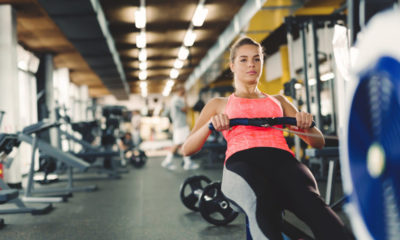Fitness
Why Are Uncomfortable Workouts So Rewarding?
Alice Hector teaches you how to train smart, work out hard and embrace a healthy dose of pain so you can push yourself to achieve world-beating results.
With sayings like ‘it hurts so good’ and ‘feel the burn’ it’s safe to say there’s something about the pain of training that most athletes love. Are serious exercisers just sadists or is there a more scientific explanation? And how do we know when to push through the pain and when to call it a day? I got my magnifying glass and flat-peaked cap out to do some detective work and find out exactly why hard workouts are so rewarding despite being so uncomfortable.
Addicted to the high
On a physical level, the addiction is not really to pain, but primarily to the neurochemicals that accompany it. These chemicals – mostly endorphins – are pretty hard core. They’re even more potent than heroin, opium and morphine. ‘Endorphin’ actually means ‘internal morphine’ and, like morphine, they lead to pain relief, feelings of euphoria and addiction. The more physically fit you are, the more receptive you become to endorphins, and, subsequently, your pain-blocking ability is better.
As the intensity and duration of your exercise increases, the amount of endorphins released also increases. This means exercise becomes progressively more addictive as the ‘buzz’ becomes more intense. That means you can train harder because of your higher pain tolerance and the increased energy they grant you.
Think about it: the high you get from not quitting when the going gets tough, the lure of achieving your fitness goals and the drive to feel that elation when you complete your challenging mission – they’re all driven by our craving for that endorphin high.
Pushing the boundaries
Endorphins block the pain and override it with all the feel-good sensations, but they don’t kick in automatically. So what can you do before they kick in?
The way in which people experience and respond to pain is due in part to genetics, although a good degree of the art of suffering can certainly be learned and practised. However, we can’t all push ourselves until we’re crawling. Most of us have ‘stop’ mechanisms in our head that kick in before we drop, so get familiar with being out of your comfort zone. Practise and embrace it, so when the session warrants, you can see what you’re really made of. You might be surprised to find your attitude towards pain will shift when you simply accept that it’s a large factor en route to becoming the best you can be.
Good vs bad
As much as we need to embrace the right sort of pain, there are times when pain is a very bad thing indeed. Our bodies give us signs that we’d be foolish to ignore.
I’ve blocked out the first sign of injury countless times – that little niggle in your knee that gets slightly worse each time, for instance. I’d plough on, chanting in my head that ‘quitting is for losers’. And lo and behold, before too long, I’d be sidelined again for 10 weeks. How many times have I regretted that last workout? Too many. You have to be honest with yourself. Learn to read your body’s signs and recognise the different types of pain. Not all aches are equal.
Exercise-induced pain that can be embraced is being out of breath, fatigue, aching muscles, slight queasiness, a side stitch during exercise and delayed onset muscle soreness (DOMS) the next day. You shouldn’t ignore sharp or unusual pains on impact or movement, discomfort around your joints, pain in a pinpointed area, light-headedness, cramp, sickness and headaches.
Distinguishing between the good and bad, and learning when to push on will help you achieve consistency in training and, ultimately, world-beating results.
Find fitness tips and more in every issue of TRAIN for HER magazine.














